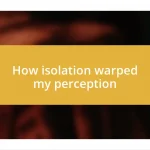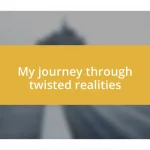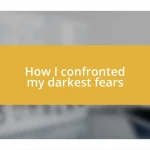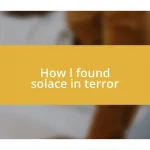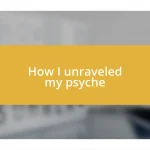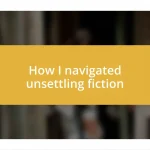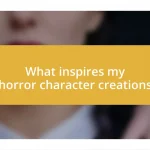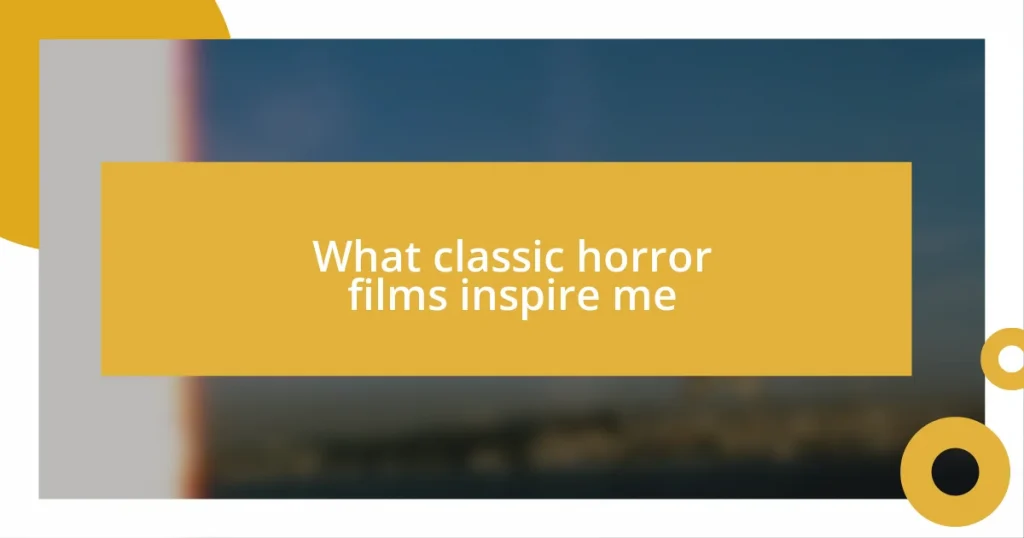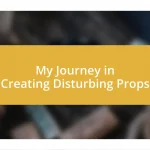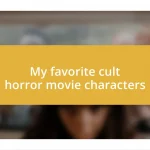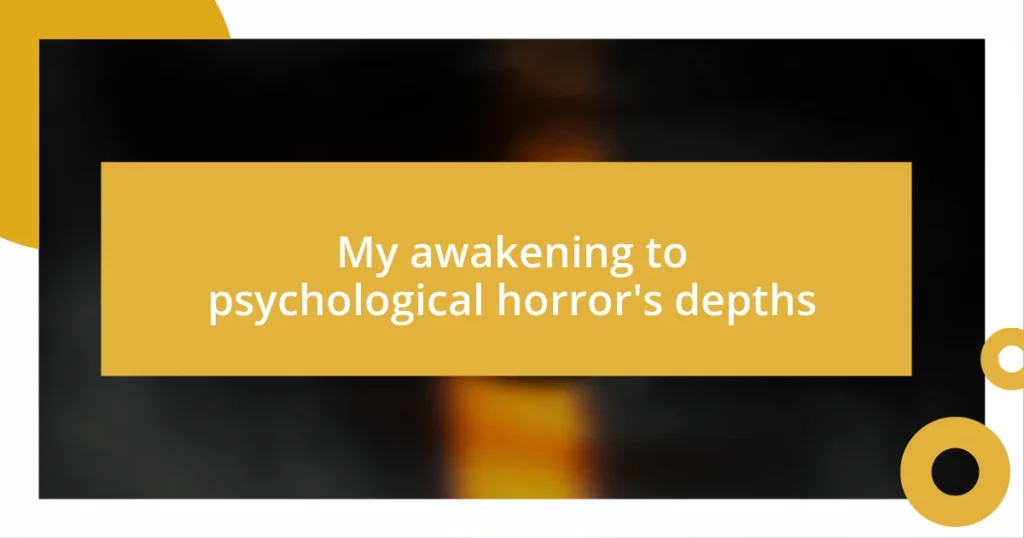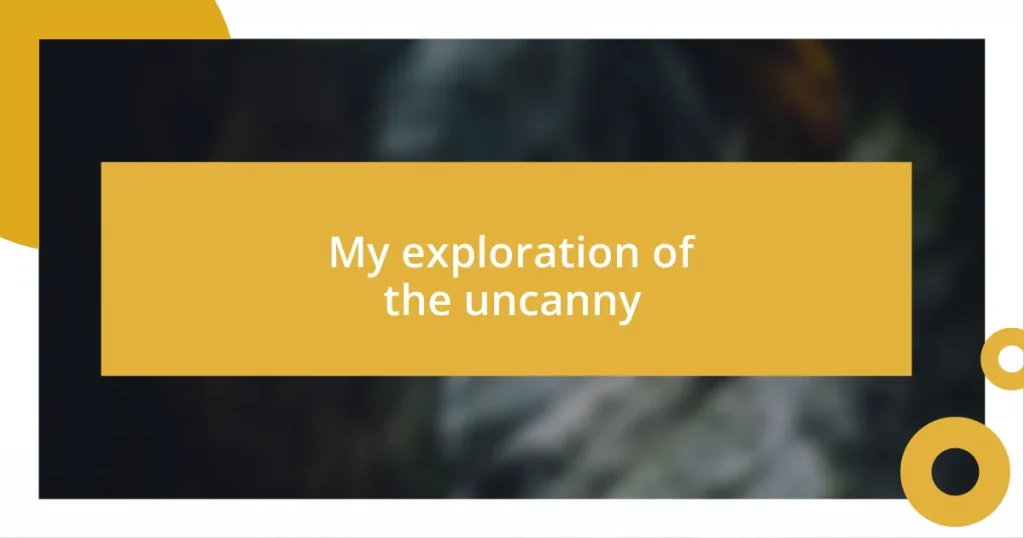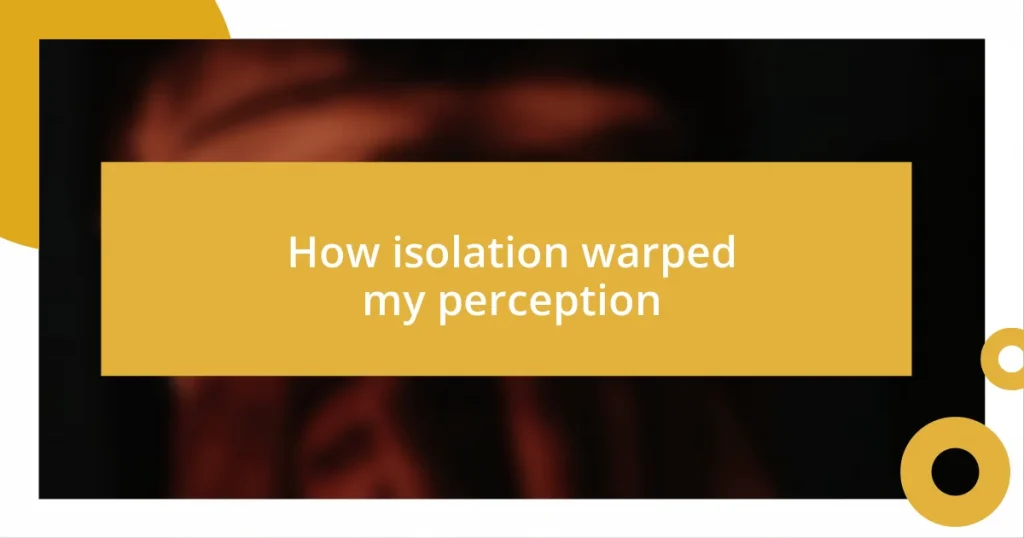Key takeaways:
- Classic horror films capture deep-seated fears and explore universal themes such as fear of the unknown and the struggle between good and evil, creating a profound emotional resonance with viewers.
- Key elements of horror, including atmosphere, character development, and symbolism, work together to evoke tension and deeper meanings, enhancing the audience’s immersive experience.
- Iconic directors like Alfred Hitchcock and influential characters such as Freddy Krueger and Regan from “The Exorcist” have shaped the genre, emphasizing how horror reflects personal and societal fears.
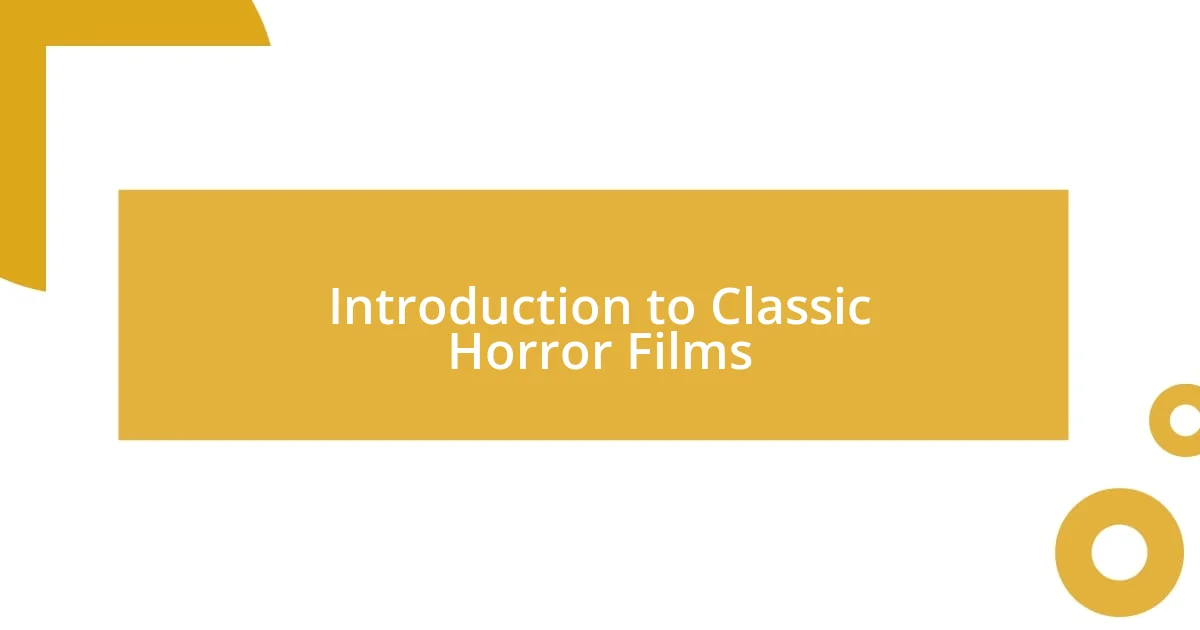
Introduction to Classic Horror Films
Classic horror films have long held a special place in the tapestry of cinema, capturing our deepest fears and leaving a lasting impact on audiences. I still remember the first time I watched “Psycho” late at night; the suspense was almost unbearable, and that iconic shower scene? It sent chills down my spine, making me realize how powerful a well-crafted horror film can be.
These films often explore universal themes such as fear of the unknown and the struggle between good and evil, resonating with viewers on a profound level. Have you ever felt your heart race while watching a character face an unimaginable terror? This emotional engagement is precisely what sets classic horror films apart; they invite us to confront our fears in a safe environment, making for a thrilling experience that we can’t help but return to.
Moreover, the artistry behind these classics— from haunting soundtracks to pioneering special effects— showcases the innovative spirit of filmmakers during their time. I find it fascinating how “Night of the Living Dead” didn’t only introduce zombies to the mainstream but also sparked discussions about societal issues. Isn’t it amazing how horror can both terrify and provoke thought?

Defining the Elements of Horror
Horror is an intricate tapestry woven from various elements that evoke our primal fears. For me, tension builds through atmospheric settings—dark, claustrophobic spaces or eerie soundscapes. I can still recall the sense of dread I felt while watching “The Shining,” where each creak of the floorboards heightened my anxiety, making the experience both terrifying and exhilarating.
Character development is equally crucial in horror films. When I think about movies like “Rosemary’s Baby,” it strikes me how the audience’s connection to the protagonist amplifies the horror. As we empathize with their plight, the impending doom feels more personal. Have you ever found yourself holding your breath, hoping against hope that they might escape the horror? Those moments of connection are what truly pull me into the narrative.
Finally, symbolism often underscores the most profound scares in classic horror. The use of props or settings to represent deeper themes makes the horror resonate long after the credits roll. I remember being struck by the use of the mirror in “Candyman,” reflecting not just the character’s fear but also societal issues. Isn’t it compelling how layers of meaning can elevate simple scares into thought-provoking cinema?
| Element | Description |
|---|---|
| Atmosphere | Settings and soundscape that instill dread. |
| Character Development | Emotional connection to characters enhances tension. |
| Symbolism | Deeper meanings behind props and settings amplify horror. |

Influential Directors in Horror Cinema
When I think about influential directors in horror cinema, a few names instantly come to mind. Alfred Hitchcock’s mastery in suspense is simply unparalleled. His ability to manipulate viewers’ emotions—like in “Psycho,” where every scene feels like a ticking time bomb—profoundly shapes the genre. I can’t help but admire how he turned mundane moments into anxiety-inducing experiences. That’s the hallmark of a director who truly understands fear.
- Alfred Hitchcock: Renowned for suspense and psychological terror.
- John Carpenter: Pioneered the slasher genre with films like “Halloween,” using tension-building score and minimalist storytelling.
- George A. Romero: Revolutionized zombie horror with “Night of the Living Dead,” merging social commentary with chilling narratives.
- Wes Craven: Known for his innovative approach in movies like “A Nightmare on Elm Street,” blending reality and nightmares.
- Tobe Hooper: Brought visceral terror to the screen with “The Texas Chain Saw Massacre,” changing horror’s raw intensity.
Reflecting on these directors and their lasting impact inspires me to seek out not just horror films but the artistry behind them. Each visionary has infused their personal style into the genre, shaping how we perceive fear. For instance, Carpenter’s use of synthesizer music in “Halloween” is something I still find unforgettable; every note feels like a haunting reminder that danger is always lurking. Don’t you feel the thrill when a director effectively pulls you into their world, making every twist and scream resonate deeply with your own fears?
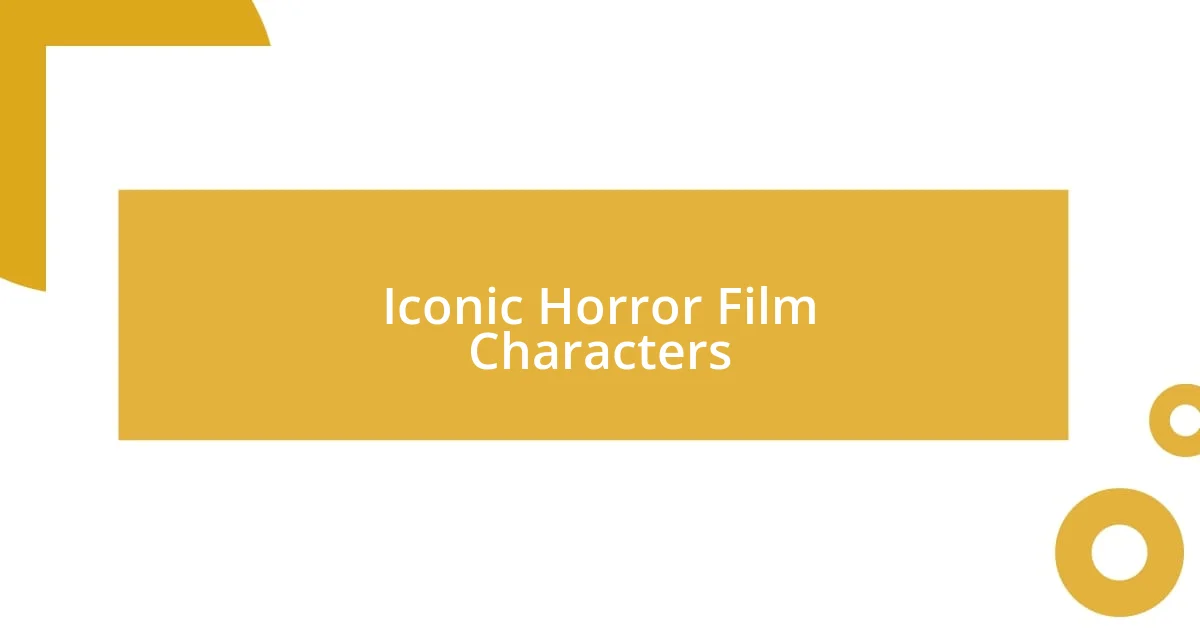
Iconic Horror Film Characters
The embodiment of fear often comes from unforgettable characters. Take Freddy Krueger from “A Nightmare on Elm Street,” for example. His scarred visage and twisted humor created a unique blend of terror and intrigue, forcing me to reevaluate the boundaries of dreams and reality. Did you ever think about how a character can haunt you even when the lights are on?
Then there’s Michael Myers, the silent, relentless shape that stalks the shadows in “Halloween.” Every time I encounter his iconic mask, I’m reminded of that chilling sense of inevitability. It’s as if he represents the lurking dangers in our lives—those feelings that something unimaginable could strike at any moment. Isn’t it fascinating how a simple mask can evoke such deep-rooted fears?
Lastly, who could forget about the vulnerability of characters like Regan from “The Exorcist”? The torment she endures taps into our most primal fears of losing control. I recall feeling a mix of pity and horror as I watched her transformation; it’s a stark reminder of how even the innocent can become vessels of fear. How does a character’s suffering resonate with our own experiences? It’s this connection that makes horror truly impactful.
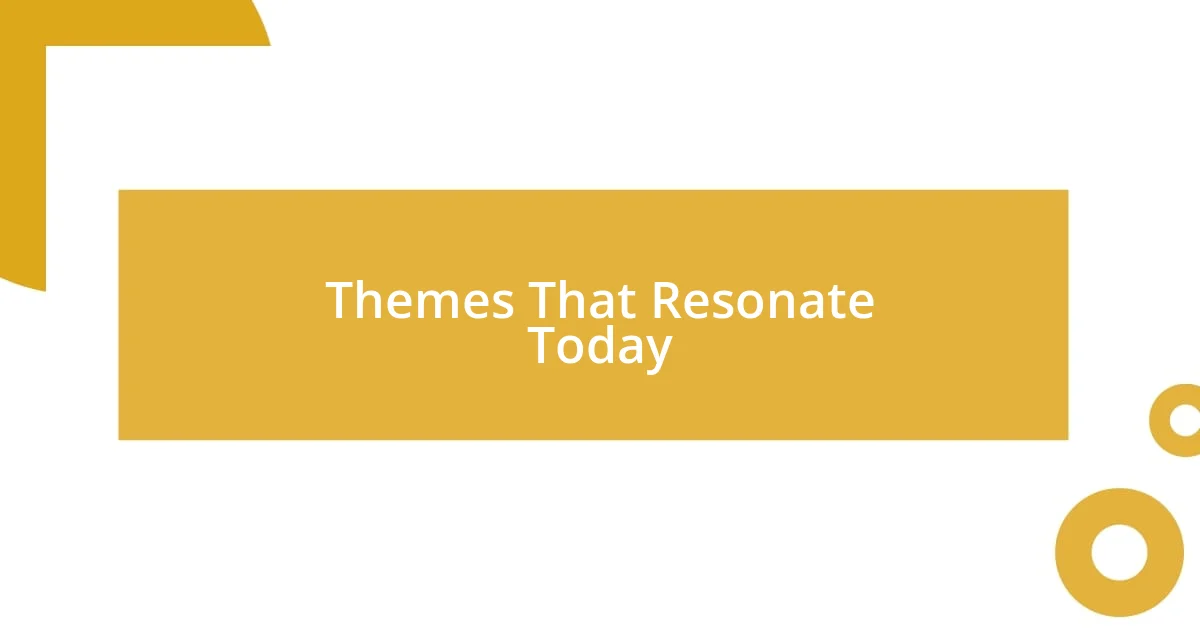
Themes That Resonate Today
There’s something captivating about the themes in classic horror films that still resonate today, particularly the exploration of fear and isolation. Films like “Night of the Living Dead” highlight how societal breakdown can turn ordinary people into primal beings, which made me reflect on today’s world. Have you ever felt that surge of anxiety when the news reports on civil unrest or a pandemic? It’s a bitter reminder of how quickly comfort can dissolve into chaos.
Another prevailing theme is the struggle between good and evil, vividly showcased in “The Exorcist.” Watching Regan battle with her inner demons invoked a feeling I can’t easily shake. It reminds us how we all wrestle with our own fears and vulnerabilities. Doesn’t it hit home when you realize that the true horror often resides within us?
Additionally, the impact of psychological horror, as seen in “Psycho,” offers a deeper look into the human psyche. I remember the first time I was genuinely unnerved by Norman Bates’ calm facade juxtaposed with his violent tendencies. It illuminated the unsettling idea that the monsters we fear can often wear a friendly face. Isn’t it odd how films can serve as mirrors, reflecting our hidden fears and moral dilemmas?
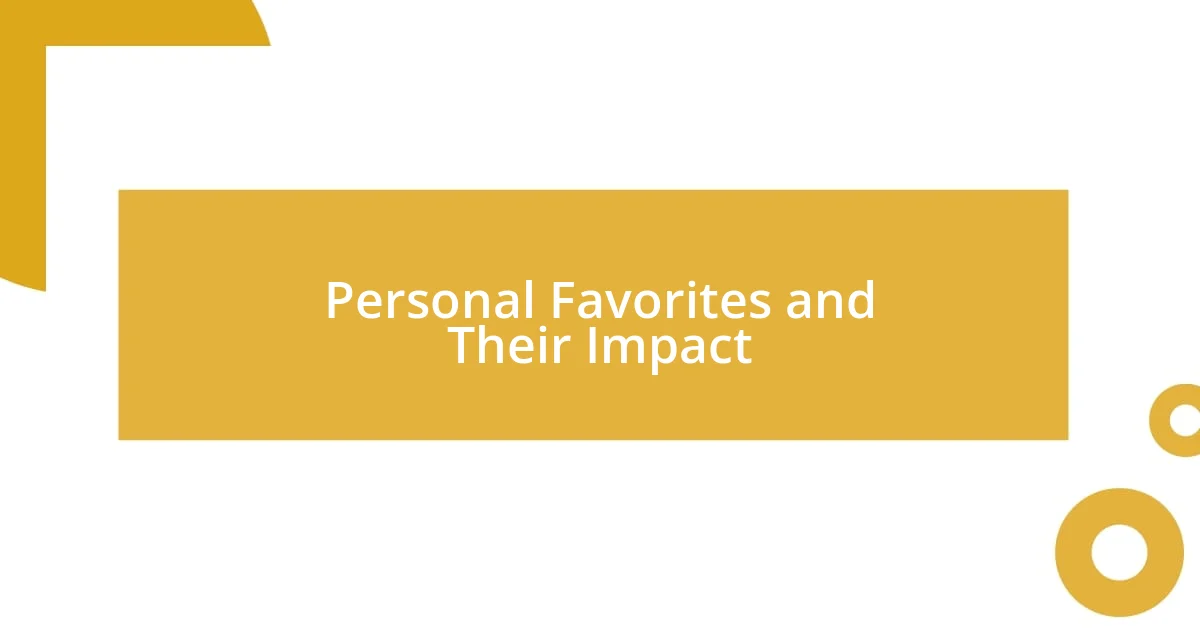
Personal Favorites and Their Impact
One of my absolute favorites is “The Shining.” I vividly remember the first time I watched it; the overwhelming sense of isolation in the Overlook Hotel struck me hard. The way Jack Torrance’s descent into madness mirrored my own fears of losing control in a seemingly ordinary life left an indelible mark on my psyche. Have you ever felt like you were teetering on the edge, wondering if your sanity could slip away in an instant?
Then there’s “Rosemary’s Baby.” The idea of unshakable betrayal from those closest to you hits home in ways I didn’t anticipate. Watching Rosemary’s struggle against supernatural forces, all the while unable to trust those around her, felt terrifyingly relatable. It made me wonder—how often do we find ourselves questioning the intentions of people we love the most? That blend of horror with real emotional stakes resonates deeply with me.
Lastly, I can’t forget “The Silence of the Lambs.” The chilling conversations between Clarice Starling and Hannibal Lecter gave me a new appreciation for the psychological aspects of horror. I found myself reflecting on the complexity of understanding one’s fears through the lens of another. How do we confront the darkness within ourselves? This film exemplifies the idea that fear can stem not just from external threats but also from internal battles, shaping my view on the nature of evil itself.
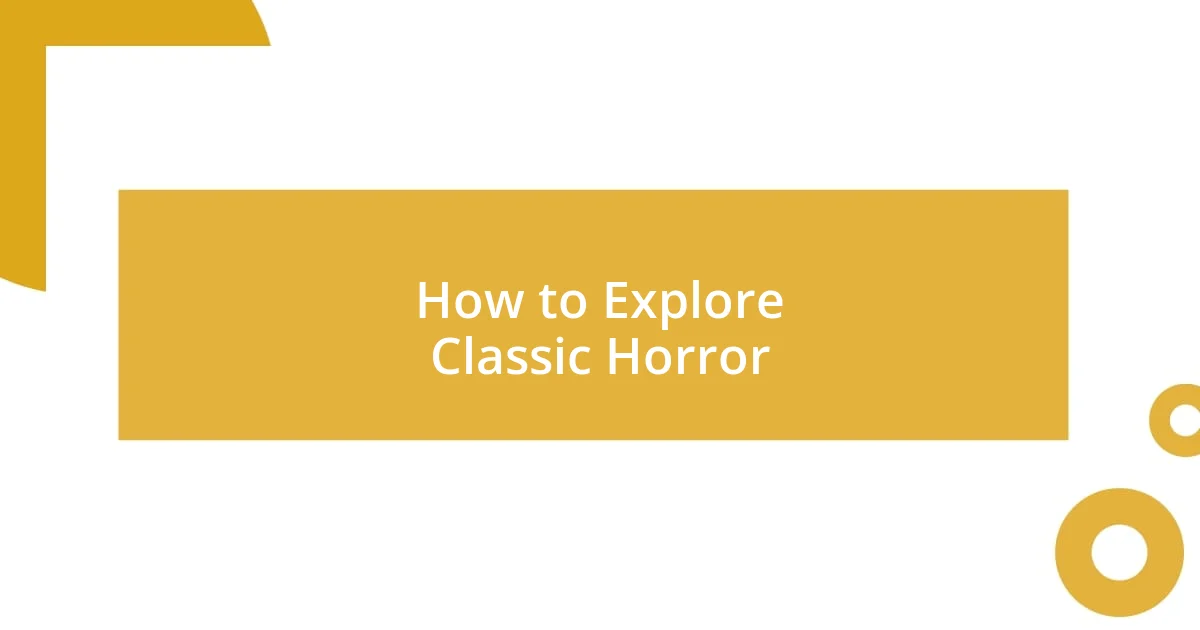
How to Explore Classic Horror
Exploring classic horror can be an enriching experience if you approach it with an open mind. When I first delved into films like “Nosferatu,” I was amazed by how the silent expressions conveyed pure terror without uttering a single word. Isn’t it fascinating how such simplicity can evoke profound emotions? Watching these older films not only invites you to appreciate the artistry of filmmaking but also helps you uncover the roots of modern horror narratives.
Another way to truly immerse yourself is by joining film clubs or online forums dedicated to classic horror. I remember discussing “Frankenstein” with fellow enthusiasts and realizing how much my interpretation evolved through their insights. It’s incredible how a community can breathe new life into well-trodden stories. Have you ever felt that buzz of excitement when someone shares a perspective that shifts your own understanding of a film?
Lastly, consider pairing your viewing experience with some research. For example, after watching “The Cabinet of Dr. Caligari,” I took the time to explore its historical context and visual style. I found that learning about the film’s influence on German Expressionism added layers to my viewing experience. Isn’t it amazing how knowing the background can deepen our appreciation for a film? Embracing classic horror in this way not only enhances your viewing pleasure but also sparks meaningful conversations you can share with others.


